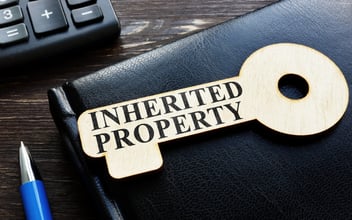Step-Up in Basis for Assets Held in an Entity

This is an article about the best tax avoidance mechanism available to individuals, bar none. When an individual dies, the assets of the deceased person may receive a "step-up" in tax basis. This means that the value of an asset for tax purposes is increased from its original purchase price and reset to its current market value on the date of the individual's death. A higher tax basis means a lower capital gain. This can provide a gigantic tax benefit for the heirs of a deceased person because it allows all the gain in value from the date of purchase to the date of death to escape taxation when the asset is sold.
For example, let's say an individual purchased real estate for $100,000, and it has appreciated in value to $500,000 at the time of the owner’s death. If the individual had sold the property before death, the $400,000 increase in value would be taxed as capital gain. However, after death, if the property receives a step-up in basis to market value and the property is sold by the heirs at market value, there would be no capital gain since the property was sold at the increased basis amount. The increase in value from $100,000 to $500,000 goes untaxed which results in a substantial tax savings.
It's important to note that the step-up in basis only applies to assets that are included in the individual's taxable estate. Not all assets are included. For example, assets held in a tax payer’s revocable trust are included in the taxable estate and will receive a step-up in basis, while assets held in an irrevocable trust will not receive a step-up in basis.
The benefit of a step-up in basis will also be lost if the property is gifted before the death of the owner. The recipient of a gift takes the tax basis of the gifting owner.
The type of entity holding assets can have a substantial impact on whether the assets in the entity receive a step-up in basis and should be a major consideration in choosing the type of entity to be created
An LLC, or limited liability company, is a type of business entity that can be treated as a "disregarded entity" for tax purposes, meaning that it is not taxed as a separate entity from its owner. To qualify as a disregarded entity the LLC must be owned by one person or by a married couple in community property states such as Texas. When a member of an LLC which qualifies as a disregarded entity dies, the assets held within the LLC will typically receive a step-up in basis, since the LLC is treated as an extension of the individual for tax purposes.
When an entity is not a disregarded entity, the question of whether there can be a step-up in basis at the death of the entity owner, becomes more complex.
If the property is held in a partnership the assets in the partnership do not automatically receive a step-up in basis like those held in a disregarded LLC. It is possible to get a step-up in basis for the assets, but there must be an election under Section 754 of the Internal Revenue Code. A failure to make a 754 election will result in the basis not getting a step-up. The help of a qualified tax professional will likely be required to make the election.
Assets held within a Subchapter S corporation also do not automatically receive a step-up in basis upon the death of a shareholder, but it is still possible to obtain a stepped-up basis. However, the process is even more complex and convoluted than a 754 election and will require the expertise of a qualified tax professional.
Finally, assets held within a C corporation do not receive a step-up in basis upon the death of a shareholder. However, while the assets within an S or C corporation do not receive a step-up in basis, the stock does receive a step-up.
In conclusion, a step-up in basis at the death of an individual can have a significant impact on the capital gains taxes paid by the heirs of a deceased person. Anyone considering creating an entity, especially one which will hold appreciating assets, should carefully consider the impact the entity will have on the availability of a step-up in basis for the assets held by the entity and other tax considerations.



